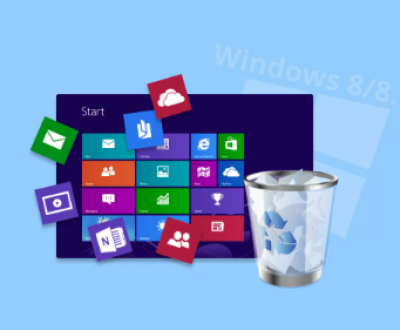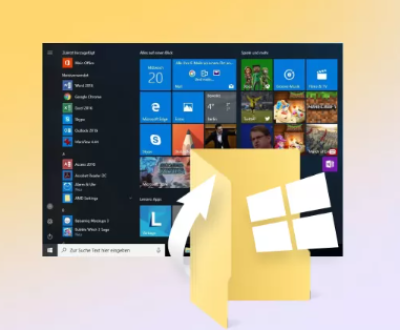A recovery partition is a specialized section of your computer’s hard drive that stores tools necessary to restore your system to its original factory settings or to troubleshoot and repair Windows when issues arise. It typically contains system recovery tools, repair tools, boot utilities, and sometimes, a copy of the original Windows OS image.
Extending the recovery partition is not as straightforward as resizing standard partitions like C: or D:. This process requires some technical know-how and involves using tools like Disk Management, Command Prompt, and third-party partition software. This guide will walk you through everything you need to know about extending a recovery partition in Windows 10. including precautions, tools, methods, and troubleshooting.

What Is a Recovery Partition?
Before diving into how to extend it, it’s important to understand what a recovery partition is and why it matters.
1. System Recovery Partition
This partition contains Windows Recovery Environment (WinRE) files. It’s used when your system fails to boot or encounters serious errors. It provides tools like:
Startup Repair
System Restore
System Image Recovery
Command Prompt
Reset this PC
2. OEM Recovery Partition
OEMs (Original Equipment Manufacturers) such as HP, Dell, and Lenovo include a recovery partition to reset your system to factory conditions. These partitions are usually larger than the WinRE partition and may include software, drivers, and a full Windows installation image.
Both types are typically hidden from Windows Explorer to prevent accidental deletion or modification.
Why You Might Need to Extend a Recovery Partition
There are a few common scenarios where extending the recovery partition becomes necessary:
Windows Update Failure: Windows might fail to install updates because the recovery partition is too small.
Insufficient Disk Space Alerts: Windows may notify you that your recovery partition is low on space.
Third-party Software Requirements: Certain backup or recovery software tools require additional space in the recovery partition.
Custom Recovery Needs: Advanced users or system administrators may want to customize the recovery partition with additional tools or scripts, necessitating more space.
Checking the Size and Status of the Recovery Partition
To assess the recovery partition, follow these steps:
Using Disk Management:
Press Win + X and select Disk Management.
Locate the recovery partition (usually labeled “Recovery Partition” or without a drive letter).
Right-click it you may notice that the “Extend Volume” option is grayed out.
Note its size and the partitions adjacent to it.
Using Command Prompt:
Press Win + S, type cmd, right-click Command Prompt, and choose Run as administrator.
Type the command:
nginx
diskpart
Then enter:
sql
list disk select disk X (replace X with your disk number) list partition
This will show you all partitions and their sizes.
Precautions Before Extending the Recovery Partition
Before you begin making changes to the recovery partition, consider the following precautions:
Backup Your Data: Although you won’t be modifying the main partitions directly, it’s still recommended to create a system image or back up your data.
Create a Windows Recovery Drive: Use a USB stick to create a recovery drive in case something goes wrong. You can do this via Control Panel > Recovery > Create a recovery drive.
Understand the Partition Layout: Ensure you know which partition is the recovery one. Misidentifying it can lead to accidental data loss.
Know Your BIOS Mode: Whether your system uses MBR or GPT partition style affects how partitions are managed.
Method 1: Using Third-Party Software (Recommended for Most Users)
Built-in Windows tools often cannot extend recovery partitions, especially if there’s no unallocated space adjacent to the partition. Third-party tools offer more flexibility.
Popular Partition Tools:
MiniTool Partition Wizard
EaseUS Partition Master
AOMEI Partition Assistant
Steps to Extend Recovery Partition Using MiniTool Partition Wizard:
Download and install MiniTool Partition Wizard Free Edition.
Launch the application and locate the recovery partition.
If there’s unallocated space next to it:
Right-click the recovery partition and select Extend.
Choose the unallocated space and apply the changes.
If there’s no unallocated space:
Resize adjacent partitions (like shrinking C:) to create unallocated space next to the recovery partition.
Move partitions if needed to place the unallocated space adjacent to the recovery partition.
Click Apply to begin the operations.
The software may ask you to reboot to perform the operation.
This method allows precise control over partition resizing and avoids the limitations of Windows’ native tools.
Method 2: Using Command Prompt and Diskpart
This method is more technical and offers limited flexibility but can be useful in simpler scenarios.
Warning: This process can be risky if misused. Only proceed if you understand Diskpart commands.
Steps:
Open Command Prompt as Administrator.
Enter the following:
sql
diskpart list disk select disk 0 list partition select partition X (your recovery partition number) extend
If there’s unallocated space immediately after the recovery partition, Diskpart will extend it. If not, this command will fail.
Method 3: Deleting and Recreating the Recovery Partition (Advanced)
In extreme cases, you may choose to delete and recreate the recovery partition with more space.
Steps:
Create a full system backup.
Use Disk Management or third-party tools to delete the existing recovery partition.
Create a new partition of desired size.
Manually copy WinRE files into the new partition:
Use:
bash
reagentc /disable reagentc /setreimage /path X:\Recovery\WindowsRE reagentc /enable
Replace X: with the new drive letter assigned to your new recovery partition.
This method is advanced and risky. Do it only if you’re experienced or working in a test environment.
Post-Extension Checklist
After extending your recovery partition, it’s important to ensure everything still works:
Check Recovery Tools: Press Shift + Restart from the Start menu and ensure you can access the recovery environment.
Run Windows Update: See if the error messages are resolved.
Check with reagentc:
Run the following to confirm WinRE is enabled:
nginx
reagentc /info
Look for: Windows RE status: Enabled
Common Errors and Troubleshooting
1. “Cannot Extend Volume” Grayed Out
This occurs when there is no unallocated space immediately after the recovery partition. Use third-party tools to move or shrink partitions.
2. “Access Denied” or Disk Lock Errors
You might need to boot into Windows Recovery Mode or use third-party bootable partition software to modify certain protected partitions.
3. “Windows RE Status: Disabled”
This means your recovery environment isn’t active. Enable it using:
bash
reagentc /enable
If that fails, verify the path using:
bash
reagentc /setreimage /path X:\Recovery\WindowsRE
Best Practices for Managing Recovery Partitions
Do not delete the recovery partition unless you have an alternative or know what you’re doing.
Keep recovery partitions updated if your OEM provides new tools.
Create periodic system restore points and full backups to reduce reliance on recovery partitions.
Keep at least 750 MB – 1 GB of space in the recovery partition for Windows updates to work smoothly.
Managing partitions is a powerful way to take control of your computer’s storage and performance. Extending the recovery partition in Windows 10. while not a frequent need for most users, can become essential when facing system update failures, low disk warnings, or advanced recovery tool integrations.
About us and this blog
Panda Assistant is built on the latest data recovery algorithms, ensuring that no file is too damaged, too lost, or too corrupted to be recovered.
Request a free quote
We believe that data recovery shouldn’t be a daunting task. That’s why we’ve designed Panda Assistant to be as easy to use as it is powerful. With a few clicks, you can initiate a scan, preview recoverable files, and restore your data all within a matter of minutes.
Subscribe to our newsletter!
More from our blog
See all postsRecent Posts
- How to recover accidentally deleted files 2025-07-01
- How do i recover a file i accidentally deleted 2025-07-01
- How to recover an accidentally deleted file 2025-07-01

 Try lt Free
Try lt Free Recovery success rate of up to
Recovery success rate of up to









